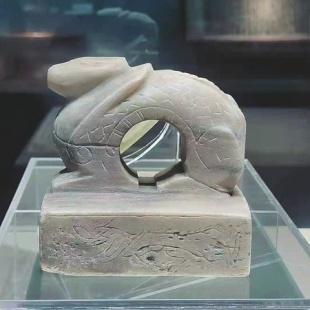Chengdu's best crypt secret
Often overlooked, an unassuming public square in the Sichuan capital is actually the final resting place of an ancient ruler, Huang Zhiling reports.


In the autumn of 1942, Ge led the first-phase excavation of the mausoleum thanks to a fund from the Sichuan provincial department of education.
Entering the mausoleum, Ge found that ancient builders had first used large stones to make the arch-shaped coffin chamber above ground and then covered the chamber with tons of mud.
When Liang Sicheng (1901-72), a famous architect and architectural historian, visited the stone chamber in the 1950s, he hailed it a marvel, as it had no supporting pillars at its center.
In the 1,103 years since Wang was buried, many earthquakes, including the magnitude-8.0 Wenchuan earthquake in 2008 which killed 69,226 people and resulted in 17,923 missing people, have taken place in Sichuan, but the chamber has continued to support the heavy mud.
Just inside the museum's front gate, a path lined with stone statues of civil officials and animals leads to the mausoleum.
With a height of 15 meters and a diameter of about 80 meters, the outside of the mausoleum still looks like a huge mound.
Inside, there is the stone coffin chamber with a total length of 23.4 meters, the widest part being 6.1 meters and the highest part 6.4 meters.
A huge stone platform, where Wang's coffin was placed, can be seen in the center of the chamber.
When the mausoleum was excavated, the coffin was found to have rotted. No bones were discovered, only pieces of wood on the platform.
The relief sculptures of the dancers and musicians are seen on the sides of the stone platform. All of the 22 musicians are seated and playing different instruments including the clapper, flute, konghou (an ancient plucked, stringed instrument), zither, sheng (a reed-pipe wind instrument), waist drum, conch and orange leaf-blowing through a rolled orange or reed leaf to produce pleasant musical notes was popular during the Tang Dynasty.
Looking plump, the dancers and musicians are represented in Tang costumes.
A music aficionado, Wang imitated the imperial court of the Tang Dynasty and established his own royal band.





































